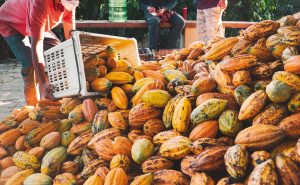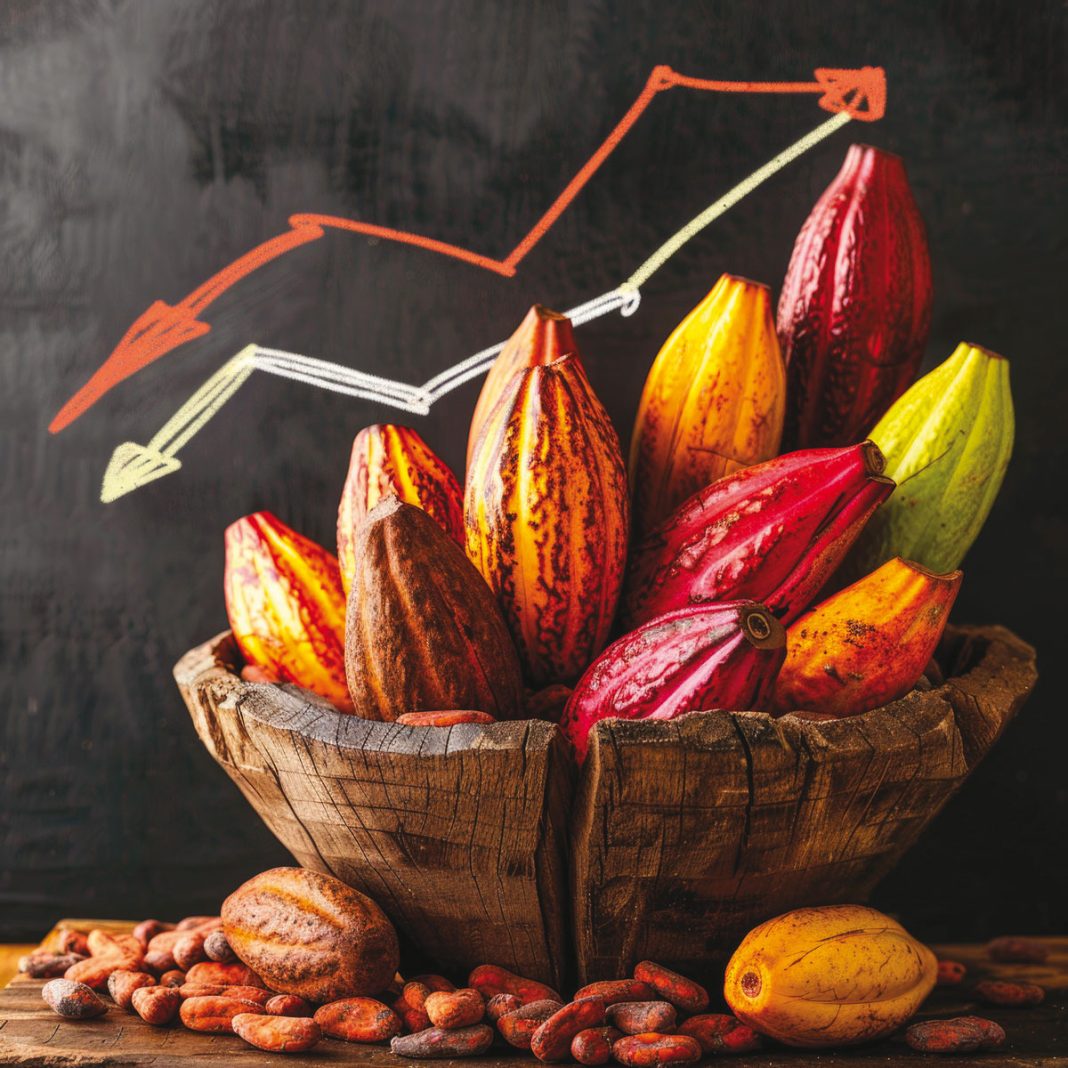The price of cocoa soars on the stock market and drives up the price of chocolate, but producers don’t always see the color, argues Max Havelaar France, who sees it as a new argument in favor of fair trade.
Consumers have already noticed it : chocolate costs up to 30% more than last year, and this trend is likely to increase. In question ? An explosion in cocoa prices on international stock markets. Cocoa trades at more than US$7,000 per tonne on the New York Stock Exchange. This increase in price is explained by a fall in production, largely linked to poor weather conditions and climate change in recent years in the main producing countries (Ivory Coast and Ghana in particular), but also to cultures in poor health or aging. These very high prices could be good news for those who grow cocoa, but there are few guarantees that this increase will reach the farmer. In international markets, indeed, prices go up and down very quickly, without guarantee for cocoa producers. For several years, diseases affecting cocoa trees in the main producing regions of West Africa lead to a drastic drop in cocoa supply. Cocoa being a commodity (essential and common product), news of falling production sparked a traditional rush of hedge funds into the commodity, which accelerated and further accentuated the rise in cocoa prices, according to analysts.
An unsuitable pricing system
At the other end of the chain, not all cocoa producers benefit from high international prices. In the two largest producing countries, Ivory Coast and Ghana, the market regulation systems which set the price at which cocoa must be purchased for the entire harvest period were not designed to respond to a sharply rising market. These prices are defined between twelve and eighteen months before sales. They were put in place to protect producers in the event of a drop in prices via a stabilization fund set up by the Ghana-Côte d'Ivoire Cocoa Initiative, but the long price revision time did not make it possible to follow the movement of stock prices in time. “There is a very strong frustration among Ivorian producers at not being able to benefit from the rise in cocoa prices.. The stabilization system, which is currently in force in Ivory Coast, does not allow producers to be paid more in the event of a price rise”, regrets Assata Doumbia, president of the ECAM cocoa producers cooperative in Ivory Coast.
Speculation denounced
“Beyond appearances of the moment, it seems essential to us to remember that speculation on the cocoa market is one of the reasons which fuels the indecent precariousness in which the majority of cocoa farmers live. This is why we continue to demand that the chocolate industry commit to ensuring a decent income for farmers.. This is simply a human right. We must put an end to the system that allows a handful of traders and multinationals to enrich themselves through speculation on raw materials at the expense of producers.", denounces Blaise Desbordes, Managing Director of Max Havelaar France. In 2018, 52% of Ivorian producers live below the poverty line. In 2017, the price had collapsed by more than 30% compared to the previous year, and the price was around US$1,900 per tonne on the markets.

“The fair trade model, which has proven itself and offers dignified living and working conditions, while fighting against child labor, should be the standard for this sector”, says Blaise Desbordes. “The uninterrupted cycle of rises and falls in market prices is not viable for producers. Unlike market uncertainty, fair trade allows producers to perpetuate cocoa cultivation under fair and sustainable conditions. The guaranteed minimum price offered to producers involved in the fair trade sector is US$2,400 per tonne., to which is added a development bonus of US$240 per tonne managed collectively within cooperatives, which makes it possible to optimize production and processing infrastructures and improve the standard of living of communities. This floor price plays its role fully when prices collapse and therefore protects producers in a market marked by volatility. When prices on the world market exceed the guaranteed minimum price, producers benefit from the market price and can negotiate. »

• 457,347 producers in 23 different countries, representing 417 producer organizations.
• More than 700,000 tonnes of fair trade cocoa per year, of which only 33% are sold under Fairtrade/Max Havelaar fair trade conditions.
• 50 million euros in development bonus received (in 2021) to finance development projects, particularly adaptation to climate change.












